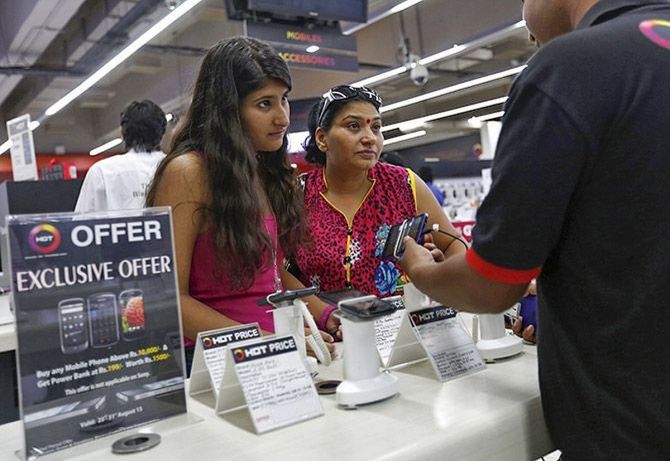With supply of mobile chipsets running dry, manufacturers here are left with no option but to hike prices once again, making it the fourth round of increase in 2020.

A revival in consumer demand may have fired up the handsets market post-lockdown, but another round of price hike is now threatening to spoil the party.
In a year, when the industry has already suffered due to shortage of components, hike in taxation rates and total loss of business for months, the latest trouble may take the sheen off the year-end glitter.
With supply of mobile chipsets running dry, manufacturers here are left with no option but to hike prices once again, making it the fourth round of increase in 2020.
Manufacturers are talking about raising handset prices by 5-10 per cent.
The sudden surge in demand for mobile handsets and supply-demand gap in the global market have upset the product-price equation for most leading companies.
In the September quarter, for example, a record 54.3 million smartphones were shipped in — 17 per cent higher than last year’s numbers.
Moreover, according to sources, a major global contract from Chinese equipment firm Huawei has widened the demand-supply gap further.
“Huawei has bought huge volumes of chipsets, more than a year’s order for them, recently. This has led to a severe supply crunch for chipsets in the international market,” a top executive of a leading handsets brand said.
According to another executive from a top tier brand, the Huawei order has significantly impacted the supply of chipsets for mid-level players as most of them have short-term contracts with suppliers.
“Larger global players are somewhat immune to this crisis. But their supplies are impacted by 10-20 per cent as well,” he said.
This shortage of supply is now quite severe as the firm is only able to secure three per cent of the chipset requirements from suppliers.
“As a result, we are now forced to purchase from spot market, where price is significantly higher,” one of the executives said.
Industry estimates suggest prices of chipsets have risen by 25-75 per cent in the spot market due to the supply crunch.
This equals to rise in cost of manufacturing a handset by 8-20 per cent, depending on the category.
Manufacturers, however, are planning to absorb a part of the rise in cost in fear of a demand slump and may hike prices by only up to 10 per cent.
The shortage in supply may continue for some time now, said Pankaj Mohindroo, chairman of Indian Cellular and Electronics Association (ICEA).
Typically, adding massive capacity takes more than a year of planning and execution.
Moreover, large orders are catered only if placed three to four months ahead of actual delivery, said chip makers.
This has further complicated the matter.
ICEA is now hoping that the situation may begin to improve early next year.
“I think we have already crossed the peak of the crisis and things will begin to ease a little by 2021,” said Mohindroo.
“It is unlikely that a company will hoard chips for too long because technology is changing fast… chips can age in a few quarters, turning them useless,” said an executive from a global chipset maker firm.
Photograph: Mansi Thapliyal/Reuters












 © 2025
© 2025